The essay I’ve prepared today is a bit different than my usual newsletter: I’m not sure if the result slots neatly into the content I’ve typically sent out here. I was also briefly paralyzed by the idea that an essay about gardening is dead boring, but as you’ll read below, tending to plants in a New Orleans July is less a hobby and more a Sisyphean effort against forces we’ll never control. At any rate, thanks for being here!
On a lighter note, I’m very excited to announce a new Milk Street workshop combining cake decorating, and yes, gardening! Only you’ll be hearing about the latter from an actual expert: Megan Bayha of Baby T Rex Farms. Megan was one of my primary sources for edible flowers when I was running the cake biz, and she’ll be teaching people the difference between edible and non-toxic blooms, as well as how to source and grow them. She’s put together an incredible list of recommendations, from soil to seed to pots (for any urban dwellers who don’t have a lot of space). You’ll also get a recipe for an olive oil cake with whipped cream frosting, and I’ll demonstrate how to assemble and decorate it. I’ll go into how I choose cake flowers depending on the occasion, and how to clean and store them so they last as long as possible. You can find the sign up page here. The class is September 19th from 5-7pm central (a full two hours!), and you can use the code GROWING15 for 15% off!
Megan cheesing with some (definitely not edible) lilies
On to the essay!
Our fig tree has developed an infestation. Thick clots of cottony insects have taken up residence on the underside of the leaves, which then darken, curl up, and die. I tried to spray them off with the most powerful setting on the hose. Fat locusts explode out from the top branches, perturbed by the jet of water. By evening we had the clippers out, lopping off swathes of infested branches. Immature figs, shriveled and already rotting, rained down from the limbs. Afterwards my wife got up on the ladder and spritzed the remaining leaves with a neem oil solution. It smelled a little like spoiled fish. I sat nearby and googled variations of Mealybugs on Fig Tree. Most of the hits were for hothouse fiddle leaf figs. I saw pictures of people gently daubing their house plants with cotton swabs dipped in anesthetic, tending the small spots dotting a leaf or two. Next to me was the great mound of sooty branches, each leaf mapped with the haze of white. My shirt was dotted with fallen insects and their shrouds.
My wife and I are lackadaisical gardeners, which for us generally means we forget about the yard when we’re busy and then fixate on it when there’s big chunks of work to be done. In our spring (late February) we plant feverishly. By July all the vegetables are burnt up or rotted back into the soil, save for some fennel we’ve let flower for the pollinators and a few leggy eggplant shrubs and basil volunteers. And, of course, the weeds, which violently thrust their way through the expensive cultivated interlopers we’ve planted as ornamental perennials. Thorny cat’s claw creeps over our fence on all sides, vibrantly green with sunny yellow flowers. Its sinister vines are able to slowly dismantle a house, slinking up the siding and pushing off shingles to let the rain and rot in. If we vanished in a rapture, every structure around us would be smothered within a few years.
I notice a broad black smudge across the trunk of the fig tree, thickening in the crevices between branches. It’s sooty mold, a byproduct of our insect plague. As the mealybugs eat the leaves, they excrete their sugary shit, honeydew, which then feeds the fungus and the contamination spreads. I end up scrubbing it off with a repurposed kitchen brush and baking soda.
We halfheartedly use the remaining neem oil on our citrus trees - the meyer lemon, kumquat, satsuma, and calamondin. They are being eaten alive, and we’re not sure it will work. We’d already given up on the kumquat, cutting it back to the graft, but it's hell-bent on a comeback, sprouting new branches about waist high. The elder lesbian at the garden center told us that many of the kumquats in the region had died. Last week, ours produced a single, improbable bloom despite the silvery blotches on its new leaves.
I can’t remember what disease is affecting the kumquats. When I try to look it up, I find that Louisiana is under multiple federal citrus quarantines. I click through the USDA interactive map and read their names: Citrus Canker, Asian Citrus Psyllid, Citrus Greening, Sweet Orange Scab. Our satsuma has four green globes of fruit, but each leaf looks like it has had a massive, cartoonish chomp taken from it. The lemon leaves are curled and twisted in on themselves like slap bracelets, as some worm wends its way through the cell walls. We trimmed one whole branch off the calamondin in the spring as it turned brown and died: the blight aptly called citrus dieback. We worried the infection would spread but it clings to life (like the sweet, sickly dog whose ashes are buried beneath its roots).
We’ve already lost a palm tree earlier in the summer, to Lethal Bronzing Disease (its incurable pathogen crossing west from Florida). We thought it would take forever to cut it down but it had already been rotting from the inside for some time and came apart rapidly under a small folding saw.
Meanwhile, the zinnias are thriving, thrusting up crazily from the thicket of burnt-up looking cosmos around them, Seussian and spectacular. A tropical wisteria, new to us this year, is taking over the arbor, producing sprouts of fuschia blooms that smell a little like lilac. The branches of our friendly, reliable crepe myrtle sway gently in the wind, shedding their fuzzy purple flowers. The crepe myrtle requires a yearly, brutal pruning to remain under control. In the winter we’ll trim back all the branches until it looks like a pillar of barren sticks.
A corner of our yard is nearly taken over by elephant ears, which reproduce with their secret underground system faster than I can contain them. Their broad leaves grow with ominous speed, some nearly two feet across. We had transplanted some cuttings from a friend to fill in a bald spot in the yard and they continue to creep out into new places. I’ve taken to cutting them off at the base with the edge of a shovel. It makes a satisfying crunch as the blade severs the three-inch-thick stalks. Within a day, new growth will appear in the stem, whose diminutive width belies the size of the remaining tuber under the soil.
Today I learned their other names - the coco yam, or wild taro. They are invading elsewhere, too, uprooting native plants in swamps across southeastern Louisiana. I read an article on LSU’s ag school website called Fortuitous Biological Control. A team of scientists is investigating a patch of taro that is dying in a swamp near Baton Rouge. Some are being eaten by an invasive insect species, the planthopper. Others have something called Dasheen Mosaic Virus, while a third cluster of symptoms cannot be ascribed to any known disease. A photo caption of an oozing leaf reads “coalescing brown/ necrotic lesions”. Citizen scientists are encouraged to report planthopper sightings on inaturalist.org.
For now, my wild taro is healthy. They’ve been loving all the rain, a welcome break from the previous year’s punishing drought. Last summer was my first in Louisiana under a burn ban. This year, we gather up all the diseased branches and leaves and set them on fire. The green fig wood is slow to catch and the smoke feels thick and greasy. There’s an excessive heat warning, with the feel’s like temperature hovering around 115. When the weather begins to cool around the fall equinox, we’ll re-seed zinnias, greens, and radishes. By winter, we can assess the damage from our grueling summer season. Next year will be another round of slow, expensive lessons.





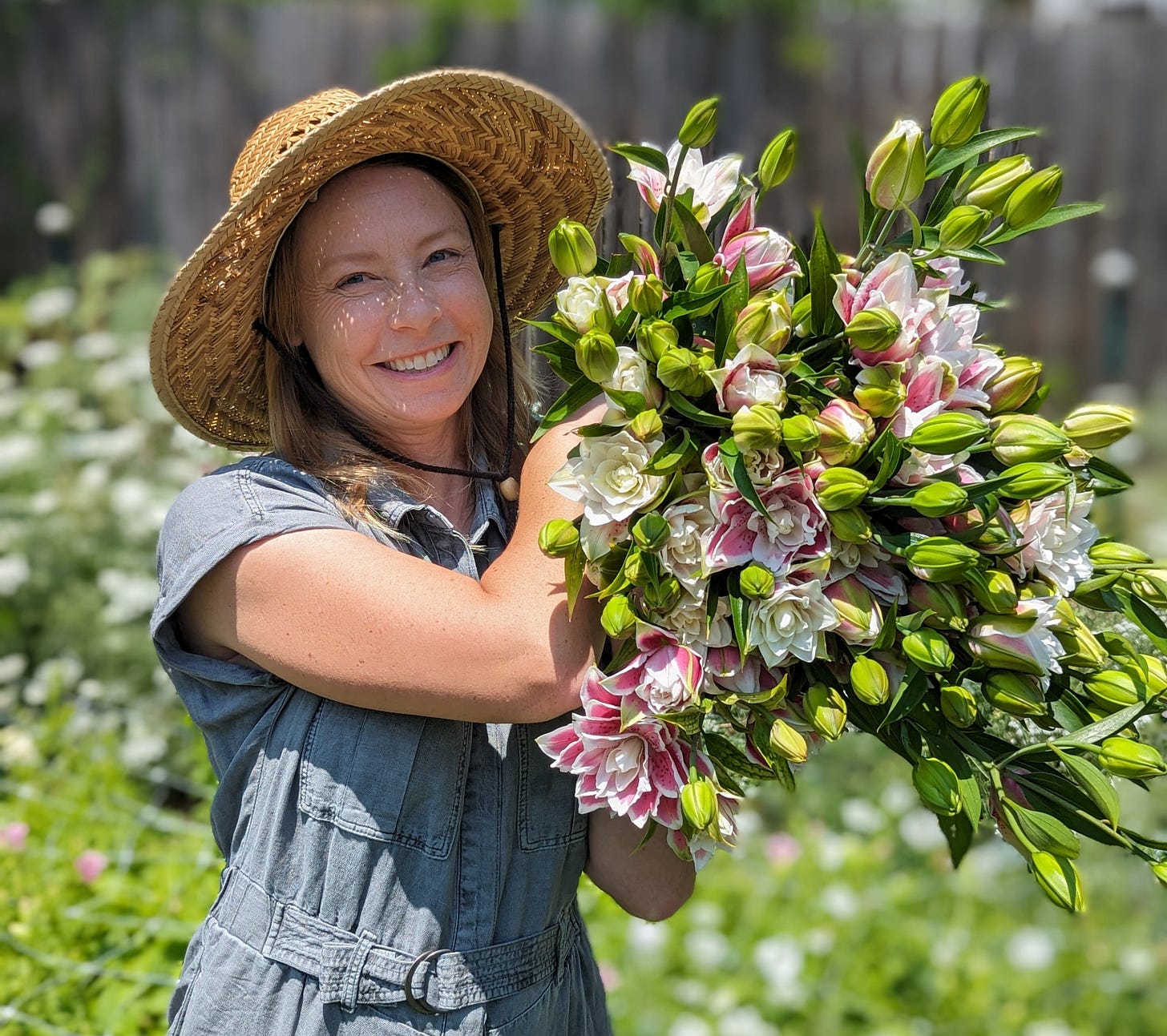
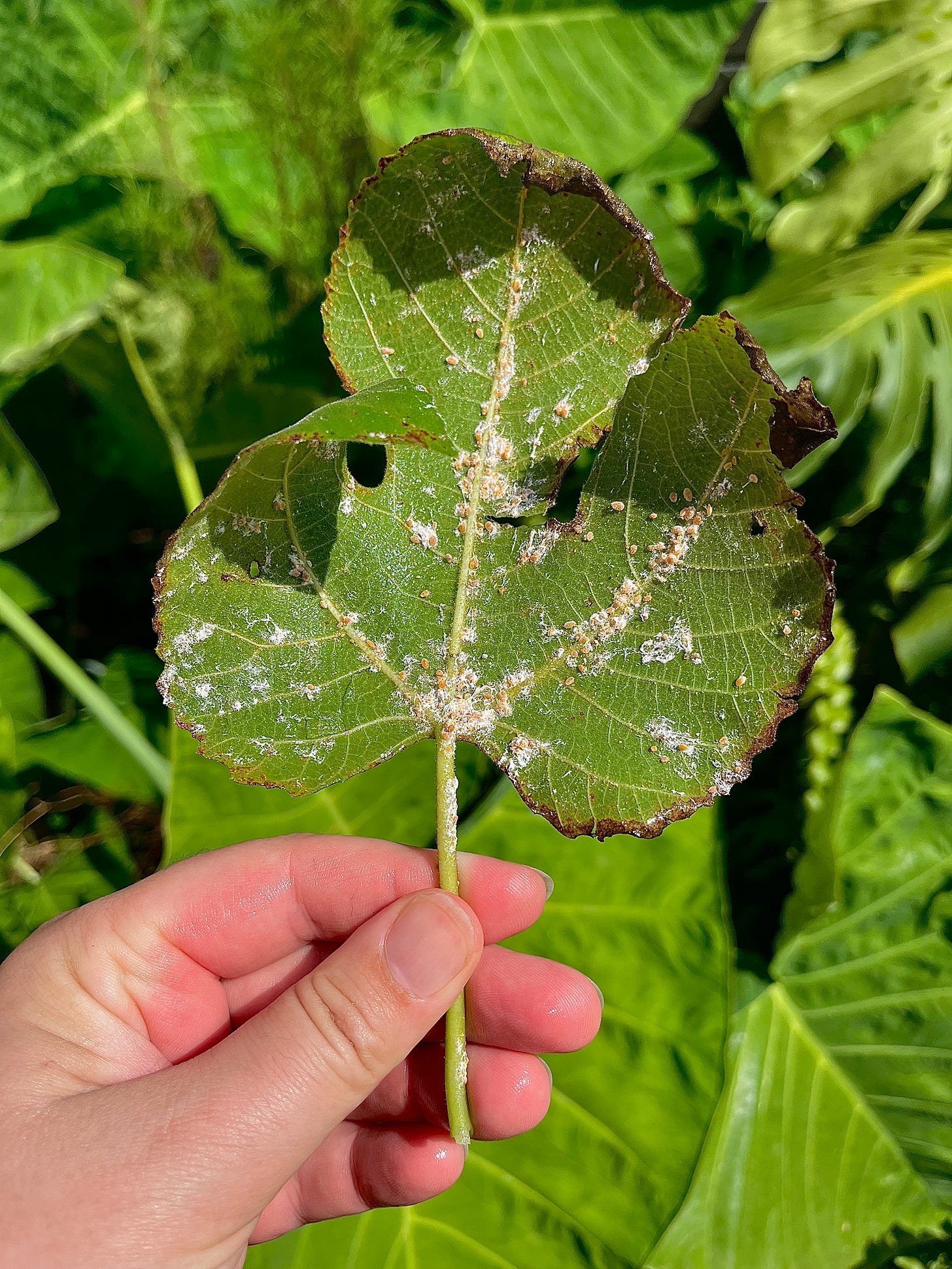
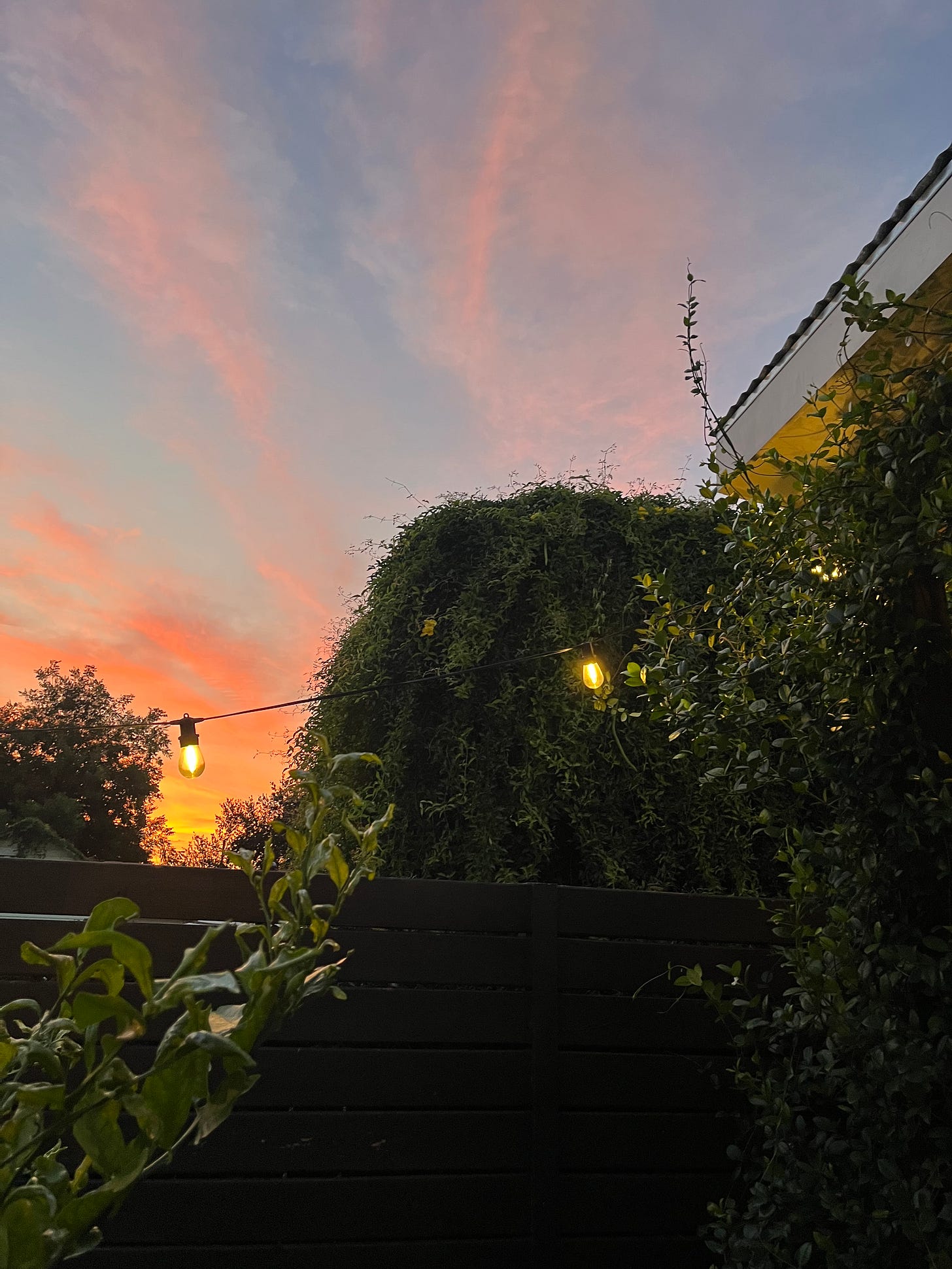
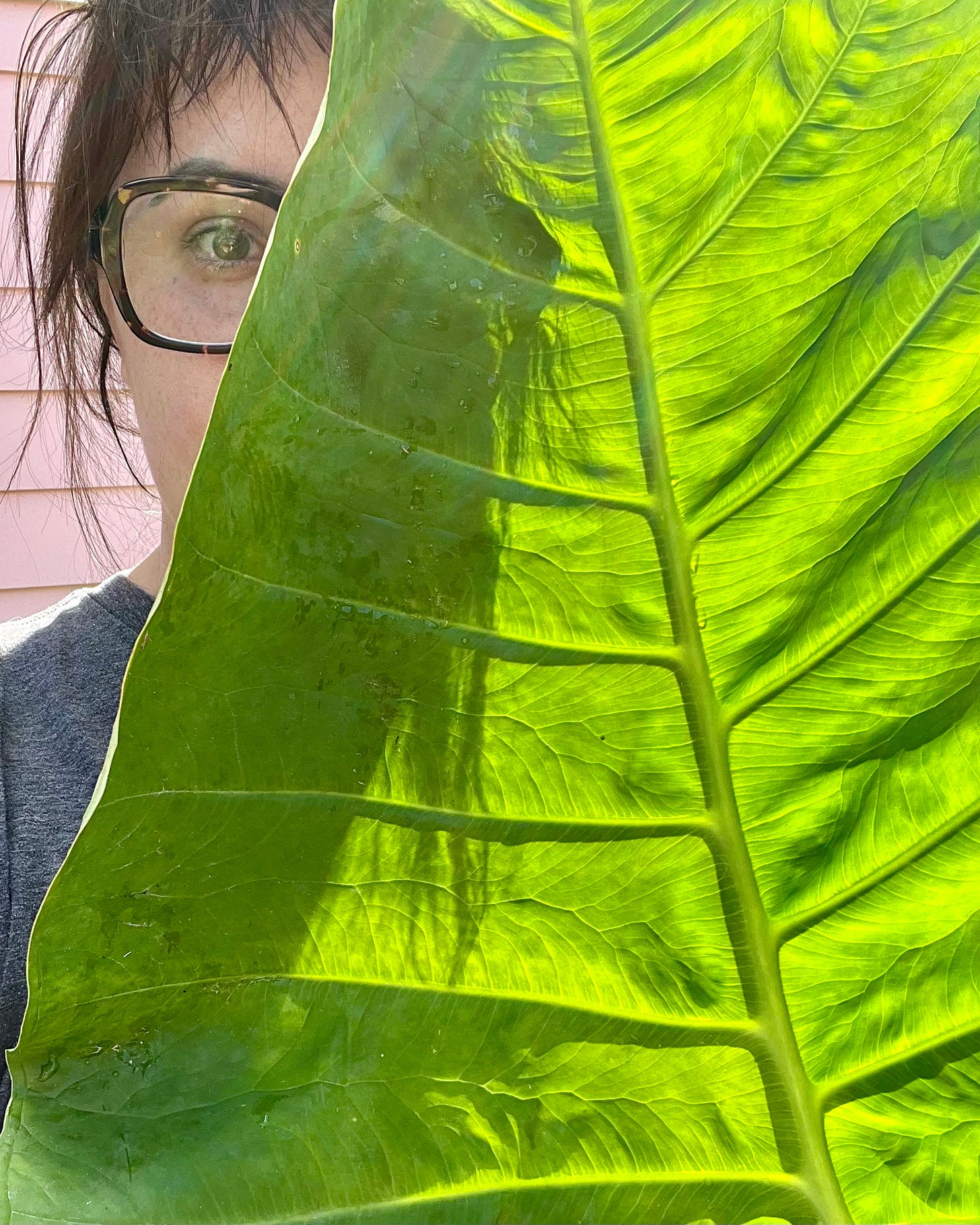
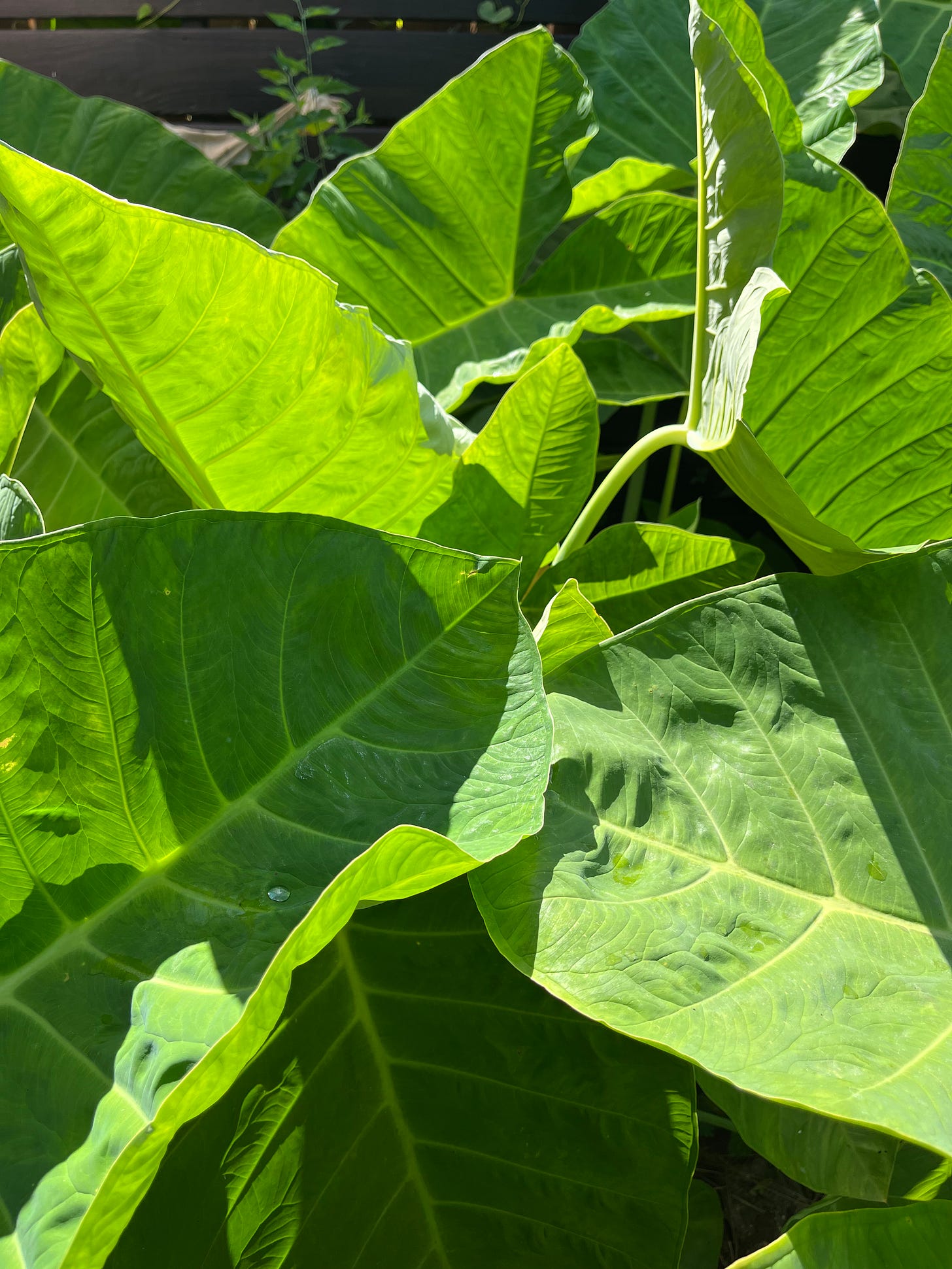
The way this is so familiar and sad to me. I had a prized florentine tomato plant this year with immaculately set fruit. GORGEOUS green tomatoes by the dozen with ribs like corduroy all around. Within two days it just gave up the ever-loving ghost, slowly followed by all our other tomato plants. Some kind of mildew, I think, because it was so hot we needed to water twice a day, and so humid the second watering never evaporated, but sat on the leaves through the dark, damp night. :(
You’ve beautifully captured the joys, sorrows and challenges of gardening! I continue to learn lessons about aggressive plants, hungry critters, tree roots, watering, fertilizing, etc. We had a real problem with aphids on the leaves of the oak tree that shades our patio several years ago. It dropped sticky sap everywhere, the leaves turned black and all the wasps and hornets and yellow jackets were greatly attracted to something about that big mess driving us indoors. We got a tree service to diagnose the issue and now they treat the tree every spring with dormant oil and it has been very successful. I hope your precious citrus trees and figs can survive the various plagues!!